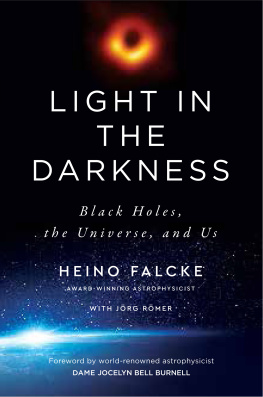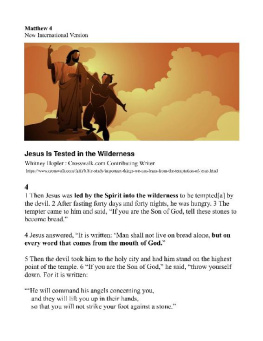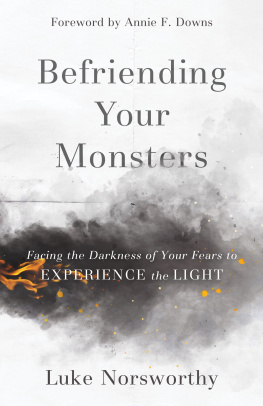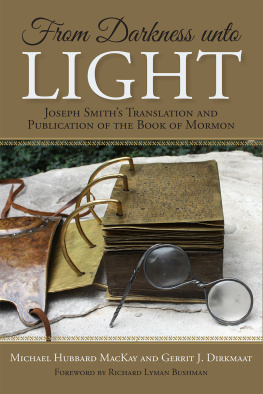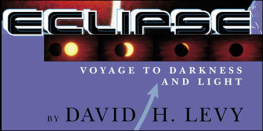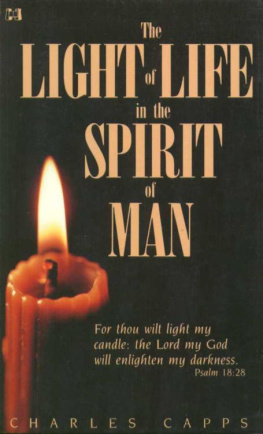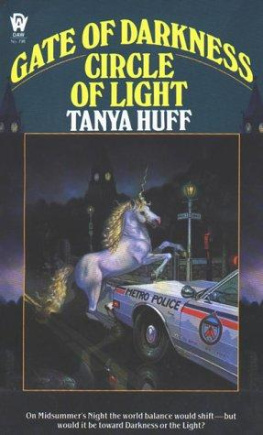Heino Falcke - Light in the Darkness
Here you can read online Heino Falcke - Light in the Darkness full text of the book (entire story) in english for free. Download pdf and epub, get meaning, cover and reviews about this ebook. year: 2021, publisher: HarperOne, genre: Science fiction. Description of the work, (preface) as well as reviews are available. Best literature library LitArk.com created for fans of good reading and offers a wide selection of genres:
Romance novel
Science fiction
Adventure
Detective
Science
History
Home and family
Prose
Art
Politics
Computer
Non-fiction
Religion
Business
Children
Humor
Choose a favorite category and find really read worthwhile books. Enjoy immersion in the world of imagination, feel the emotions of the characters or learn something new for yourself, make an fascinating discovery.
- Book:Light in the Darkness
- Author:
- Publisher:HarperOne
- Genre:
- Year:2021
- Rating:4 / 5
- Favourites:Add to favourites
- Your mark:
- 80
- 1
- 2
- 3
- 4
- 5
Light in the Darkness: summary, description and annotation
We offer to read an annotation, description, summary or preface (depends on what the author of the book "Light in the Darkness" wrote himself). If you haven't found the necessary information about the book — write in the comments, we will try to find it.
Light in the Darkness — read online for free the complete book (whole text) full work
Below is the text of the book, divided by pages. System saving the place of the last page read, allows you to conveniently read the book "Light in the Darkness" online for free, without having to search again every time where you left off. Put a bookmark, and you can go to the page where you finished reading at any time.
Font size:
Interval:
Bookmark:
The release in April 2019 of the image of a huge black hole in the center of a distant galaxy rightly attracted a huge amount of attention and interest. This is the story of how that image came to be made. First, the gathering together of a group of scientistsastronomers, and specialists in radio telescopes, radio receivers, and data processing. Then, persuading the guardians of resources (money, radio telescopes, computing facilities) to release enough for this project. And last came making the observations and analyzing the data, producing the image. This account is written by one of the prime movers of the project, one who has had long involvement with it, and who lived it, day in and day out, for some twenty years.
Having worked on some international projects myself, I judge to be pretty accurate the old adage that the complexity of a project goes up as the cube of the number of partner organizations involved. Different bureaucratic methods, different backgrounds, different languages, different outlooks, and different goals all provide multiple pitfalls for the unwary project leader! This project resulted in a paper with 348 authors in eight observatories on four continents making the observations and analyzing the data. The management of a project of this size, with undoubtedly numerous prima donnas, is an amazing achievement of its own!
Those of us who worked in x-ray astronomy in the 1970s and 1980s quickly had to accept that black holes existed. Okay, those black holes are stellar mass, tiny compared with the ones at the centers of galaxies; but accepting the existence of black holes, accepting that this bit of physics is correct, was the big step. So having lived for some fifty years with these beasts, I am underimpressed by the excitement around the image of the black hole at the center of M87. But I am impressed that such a large group of scientists and other specialists can be pulled together and kept working together to achieve this image!
Features of black holes (even if not named as such) have long fascinated us. Think of C. S. Lewiss The Lion, the Witch and the Wardrobe. That wardrobe is what we would now call a space-time bridge leading the children to a different world in a different season and at a different time of day. Space-time bridges could be formed if a black hole (which swallows things) could be connected to a white hole (which emits things). The connection was named a wormhole by John Wheeler. Alan Garners Boneland, set near Jodrell Bank, also suggests some amazing distortions of space and time, although it does not explicitly invoke black holes, and there have been many books explaining the properties of black holes.
Being an astrophysicist, one cannot totally avoid the big questions like: how (or why) was the universe created, and what is there after the death of the universe, and are there other universes? The yawning maw of a black hole reminds us that the universe is not cozy, and there is an embedded existential challenge. However, deadlines and other mundane things call, there is plenty to be getting on with, and so these questions may not occupy center stage in our minds for long.
The universe appears to defy definitive description and full comprehensionquestions like where did it come from, or why did it start, do not seem to have a scientific answer. Some of us believe in a God or even a creator God, some dont. Some of us are Christian, some other religions, some none. However, it seems to me that ultimately we come to a point in our understanding/belief system/theology where we have to say we dont know, or we dont understand. We go on living and working, because we have to, and make the best of it. Some of us are better at living with uncertainty and incompleteness, and such untidiness than others.
Falcke sets out his understanding in the final section of this book, and I admire him for making the effort, and for doing so. But arguably this may be more for him than for us! Belief systems are to a degree tunable; we can (and do) tune them to our personalities and to our particular needs.
This very readable book is written in a lyrical styleclearly the author is in love with a wondrous universe.
Jocelyn Bell Burnell
The lights go out in the large press room at the European Commissions headquarters in Brussels. The moment that weve waited so long for, that weve all worked many years and to the point of exhaustion to bring about, is finally here. It is Wednesday, April 10, 2019, 20 seconds past 3:06 p.m. Forty more seconds to go, and then, for the first time, people all over the world will marvel at the image of a giant black hole. It is located at a distance of 55 million light-years from Earth, at the center of the Messier 87 GalaxyM87 for short. For a long time it seemed that the deep darkness of black holes would remain completely and forever hidden from our eyes, but today that darkness will step out into the bright light of day for the first time.
The press conference has begun, but we still dont have the slightest sense of all that it is to lead to. Humanitys thousand-year journey of discovery, traveling to the very limits of our knowledge; revolutionary theories about space and time; the most modern technology; the work of a new generation of radio astronomers; and my entire life as a scientisttoday they will all be brought together in this single image of a black hole. Astronomers, scientists, journalists, and politicians watch transfixed, waiting to see what we here in Brussels and in other world capitals are about to reveal. Only later will I find out that millions of people around the world are glued to their screens, and that in just a few hours close to four billion people will have seen our image.
In the front row of the hall sit distinguished colleagues and young scientists, many of them students of mine. For years weve worked together in an intense collaboration. Each of them has pushed their limits, going far beyond what they or I could have imagined. Many of them traveled to the most remote regions of the Earth, sometimes risking their livesall for this one goal. And today the successful result, the culmination of their work, is the center of the worlds attention, while they sit in the dark. I would like to thank them all right now, because each and every one of them has helped to make this breakthrough possible.
But the clock is ticking. I feel like Im in a tunnel, every impression flies past me like the wind past a race car driver. I dont notice the phone in the third row whose camera is pointed at me. The clip turns up later as a trending topic on a popular website for kidsbetween vulgar jokes about the president of the United States rear end and a famous rappers latest single. The journalists are tense and alert, and I start to feel tense myself: there is expectation in every eye. My pulse is racing. Everyone is staring at me.
Carlos Moedas, the European Union science commissioner, spoke just before me. Dont speak for too long, wed told him. Moedas stoked the audiences curiosity with his remarks, but he finished too early. I have to improvise to fill the time, while trying to hide how nervous I am.
This very first image is to be unveiled simultaneously all over the world. At exactly 3:07 p.m., Central European Time, the image will appear on the giant screen here in the hall. At the same time, my colleagues in Washington, Tokyo, Santiago de Chile, Shanghai, and Taipei will reveal this image of a black hole, offer comments, and answer journalists questions. Computer servers on every continent are programmed to send academic papers and press releases out to all corners of the world. Time passes inexorably. Weve coordinated and planned everything in advance, with the utmost precisionthe slightest deviation would throw everything out of sync, no different than how it was during our campaigns to gather observational data. And now I start stumbling right out of the gate.
Font size:
Interval:
Bookmark:
Similar books «Light in the Darkness»
Look at similar books to Light in the Darkness. We have selected literature similar in name and meaning in the hope of providing readers with more options to find new, interesting, not yet read works.
Discussion, reviews of the book Light in the Darkness and just readers' own opinions. Leave your comments, write what you think about the work, its meaning or the main characters. Specify what exactly you liked and what you didn't like, and why you think so.

